WE TAKE ACTION
lux-Airport is now certified in the Airport Carbon Accreditation Program, under the administration of WSP. Luxembourg Airport has earned accreditation level 3+, «neutrality», in recognition of the airport’s actions to manage its CO2 emissions.
The certification program is part of the global airport industry’s response to the challenge of climate change.
| 327 | 3+ | 63 |
|---|---|---|
| AIRPORTS ACROSS THE WORLD | LUX-AIRPORT LEVEL | CARBON NEUTRAL AIRPORTS |
«At the beginning of the 1990s, I passed for a soft dreamer by announcing that we would halve CO2 emissions. Today, this is the case. I come back to the same idea: the hardest thing is to choose to change course. After that, it’s only a matter of deadlines and progress.» Camille Gira – Former State Secretary for Sustainable Development and Infrastructure, Luxembourg
Committing to Net Zero by 2030
lux-Airport is one of 97 Airports that have Committed to Achieving Net Zero, absolute Carbon Neutrality, by 2030.
In order to avoid the most acute repercussions of climate change, our civilisation needs to reach “net zero carbon emissions” by 2050 at the latest. Net zero as defined by the IPCC is that state “when anthropogenic CO2 emissions are balanced globally by anthropogenic CO2 removals over a specified period.”
In other words, to achieve this, we either need to stop producing new CO2 or compensate for any emissions by removing existing emissions from the earth’s atmosphere.
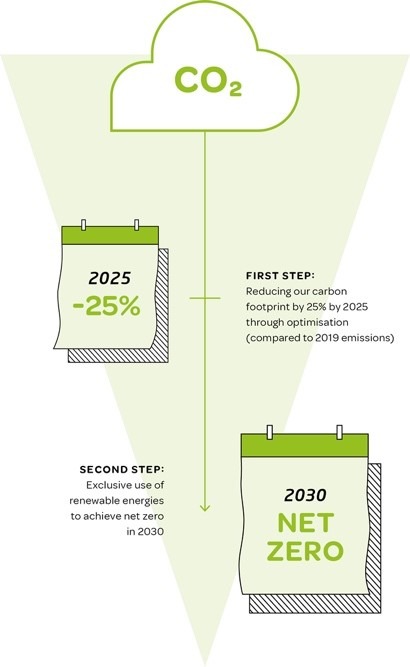
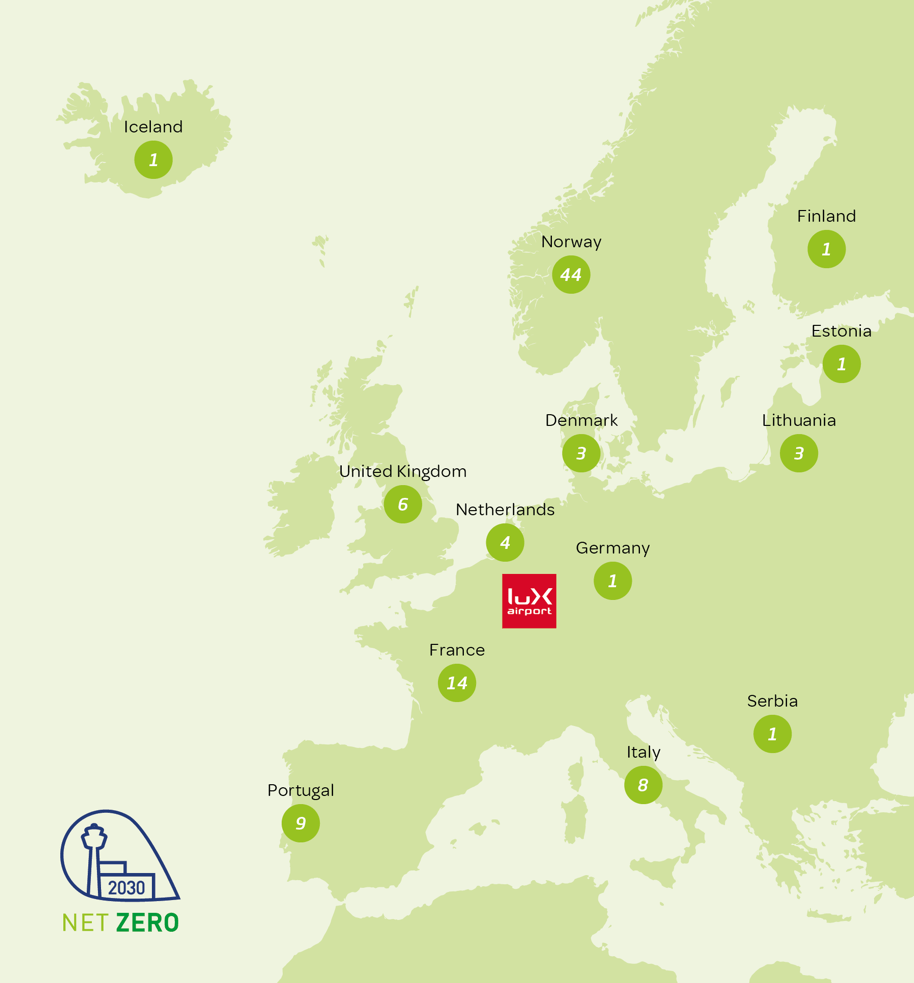
A number of airports that have committed to net zero by 2030
In good company: European Airports are pulling together
Airports have bold ambitions on their journey to becoming carbon-neutral, with experience in carbon management built up over more than a decade. In their landmark resolution adopted in June 2019, they committed to net zero carbon emissions from operations fully within their own control by 2050 at the latest. lux-Airport is one of 97 airports that have committed to achieving net zero, absolute carbon neutrality, by 2030.
Emission inventory and defining targets
Carbon Footprint baseline assessment
2019 was chosen as the baseline year for the road map. This decision was based on clear data availability for electricity, heating, cooling and vehicle fuel. Once the baseline had been decided, a detailed analysis of emission sources was prepared to understand where the major opportunities for improvement at the airports are. An extensive list of solutions used at other airports and in other industries has been studied and the potential of their application to lux-Airport has been analysed in detail. With this approach, the different opportunities available to reach net zero, their potential impact and the challenges involved have been analysed. From this, the list of possible solutions applicable to lux-Airport has been extended.
Our Carbon Emissions sources
(reference year 2019)

Targeted Scenario: 4 pillars
Our approach is to create an emission inventory (reference year: 2019) and establish a baseline emission forecast to cover the period from now until 2023. We consider four pillars: vehicle fuel, heating, cooling and electricity. For each of these main pillars, we will develop and assess possible measures, including a technical feasibility check, an assessment of possible CO2 reductions, as well as a timeline and cost estimation (CAPEX/OPEX).
The resulting feasibility/scenario matrix will determine our actions.
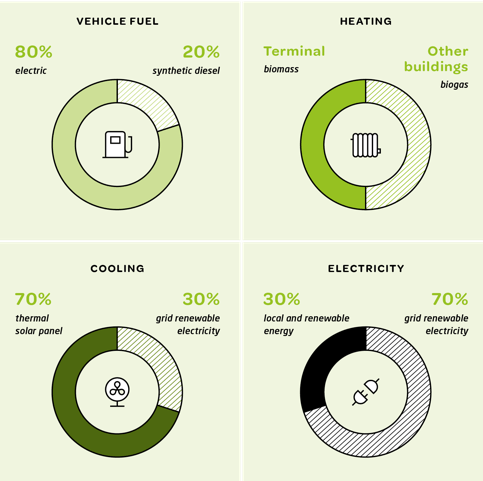
Hard-to-Abate Emissions Although the developed scenarios describe pathways that aim to ensure lux-Airport becomes a net zero carbon airport, a few hard-to-abate emission sources are expected to remain. lux-Airport will choose a solution compliant with the requirements, such as carbon capture and storage or other local nature generation.
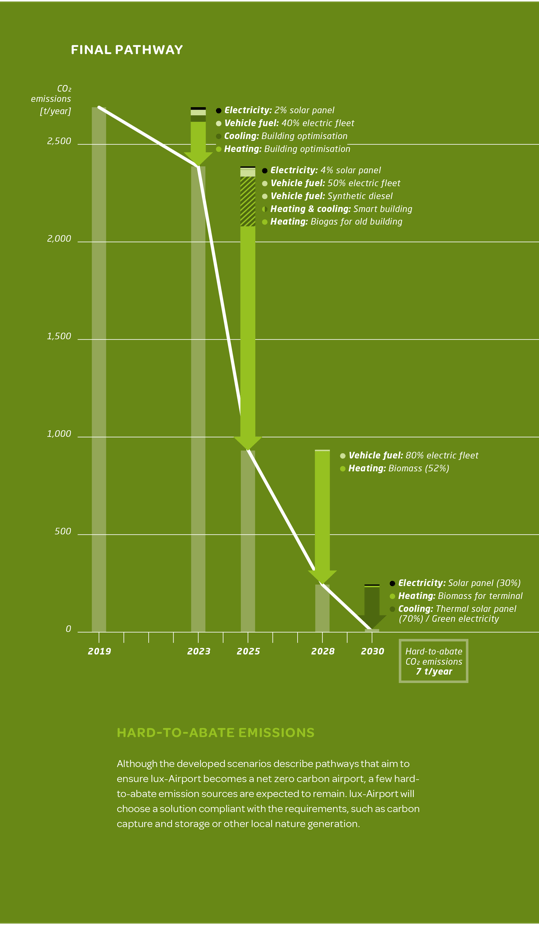
Results of carbon Footprint Reduction
To calculate the market-based carbon footprint, airports use the emission factor derived from the energy attributes specified in their contracts.
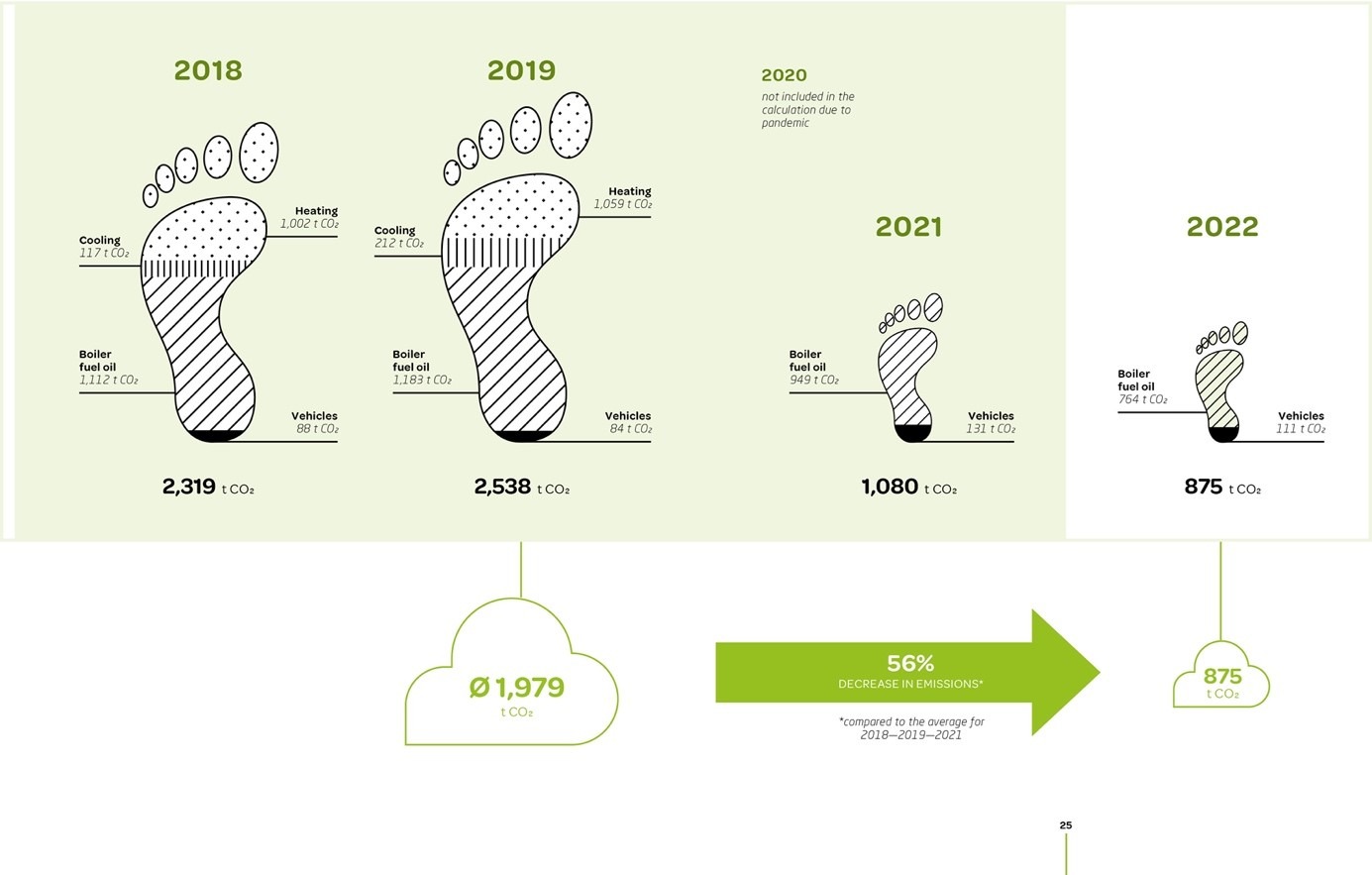
At lux-Airport, both our electricity and gas sources are carbon-neutral:
Electricity (including cooling): Ecomix Hydro green energy from Enovos, which comes entirely from renewable sources (hydroelectric plants).
Gas heating: Naturgas is 100% climate-neutral and offsets its greenhouse gas emissions through high-quality development projects.



